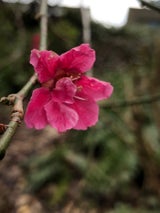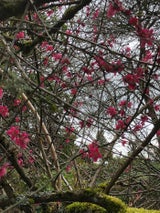- Plant IDs
- >
- ID By Type
- >
- Trees
- >
- Deciduous Trees
- >
- Prunus mume
Prunus mume
Common name: Japanese Apricot, Chinese Plum, Japanese Plum, Mei
Prunus mume, highly valued as an ornamental, is a small tree with a rounded crown. It is a member of the genus Prunus which includes cherries, peaches, plums, almonds, and apricots. P. mume is native to southwest China and was later introduced to Japan, Taiwan, and Korea. It has been cultivated in China for over a thousand years and is an important tree in its culture. It is associated with its art, literature, and everyday life. For example, P. mume is one of the 'Three Friends of Winter' which includes Pine for longevity, and Bamboo for prosperity and procreation. P. mume represents vitality and good luck.
P. mume is cultivated for its flowers and its fruit. The blossoms, which are born singly, sit directly on the branches without peduncles (stalks). They are spicily fragrant, delicate, 5-petaled, and pink and open before the leaves appear. The flowers bloom on the previous year's wood, so if pruning is needed, it should be done right after the tree has finished flowering.
The yellow, fuzzy-skinned fruit, which ripens in mid summer, is described as tasting very bitter, and shouldn't be eaten raw. In Asia, it is used to make pickles, sauces, juices, and liquor. P. mume is also used in traditional Chinese medicine.
P. mume was given its species name by Phillip Franz von Siebold who saw the species in Japan and was the first European to describe it under its currently accepted name (in 1855). The specific epithet is the Japanese pronunciation of the Chinese name for the tree (梅).
Prunus mume can be found in several spots in the garden. The photos are of the tree in Bed 21 next to the parking lot.
Text and photos by Kumi Sutcliffe





